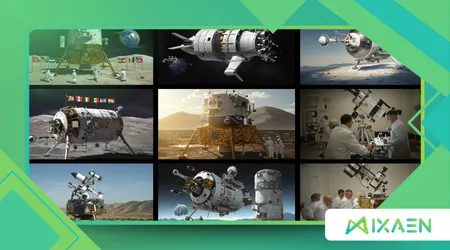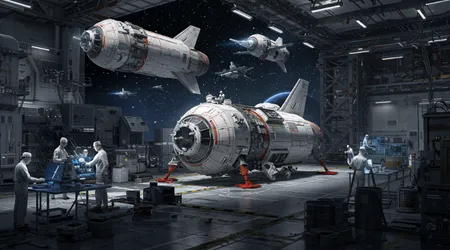Would the Space Race Have Happened Without World War II?

The Space Race Have Happened Without World War II question invites us to unravel a complex web of historical causality, technological ambition, and geopolitical rivalry.
Anúncios
The Space Race, that electrifying 20th-century contest between the United States and the Soviet Union, reshaped humanity’s relationship with the cosmos.
It launched satellites, sent humans to orbit, and culminated in the Apollo 11 Moon landing in 1969. But could this feverish competition have ignited without the cataclysm of World War II?
To answer, we must explore the war’s role in accelerating rocket technology, fueling Cold War tensions, and shaping the ideological battleground that propelled nations skyward.
This journey through history reveals not just the mechanics of rocketry but the human drive for supremacy, curiosity, and survival. Let’s dive into the forces that made the Space Race possible and question whether its trajectory was inevitable.
The stakes of this question go beyond academic curiosity. The Space Race wasn’t just about planting flags on the Moon; it birthed technologies like GPS, satellite communication, and medical imaging, still vital in 2025.
Understanding its origins helps us grasp how global conflicts shape innovation. Was World War II the spark, or would human ambition have found another way to reach the stars?
Let’s explore the war’s technological, geopolitical, and cultural impacts to uncover the truth.
The Rocketry Revolution: World War II’s Technological Catalyst
World War II unleashed a frenzy of technological innovation, with rocketry at its core. Germany’s V-2 rocket, developed by Wernher von Braun, became the war’s most advanced weapon.
This liquid-fueled missile, capable of striking targets 200 miles away, showcased rocketry’s potential. By 1945, the Allies and Soviets were scrambling to capture German scientists and V-2 blueprints, a race that laid the Space Race’s foundation.
Operation Paperclip saw the U.S. recruit von Braun and 1,600 German engineers, many with Nazi ties, to bolster American rocketry. The Soviets, meanwhile, seized V-2 remnants and expertise, jumpstarting their own programs.
Without the war’s urgency, would nations have invested so heavily in rockets? The V-2’s development was driven by military desperation, not scientific curiosity.
Consider the timeline: pre-war rocketry was rudimentary, with pioneers like Robert Goddard working on small budgets. The war’s massive funding and urgency accelerated progress decades ahead.
By 1945, the U.S. and USSR had the tools to dream beyond Earth. The Space Race Have Happened Without World War II hinges on this question: could peacetime innovation have matched wartime intensity?
++ How Science Fiction Inspired Real Space Missions
The war also standardized liquid-fuel propulsion, critical for spaceflight. Without the V-2’s blueprint, early satellites like Sputnik might have been delayed.
Peacetime research lacked the same existential drive. Imagine a world where rocketry remained a niche science progress would have crawled.
Yet, some argue curiosity alone could have driven rocketry forward. Visionaries like Konstantin Tsiolkovsky theorized spaceflight decades earlier.
But without war’s resources, their ideas remained theoretical. The war’s legacy was not just technology but the infrastructure to scale it rapidly.

Cold War Tensions: The Geopolitical Fuel
The Cold War, born from World War II’s ashes, turned rocketry into a symbol of ideological supremacy. The U.S. and Soviet Union, former allies, became rivals in a bipolar world.
The Space Race Have Happened Without World War II if the Cold War hadn’t emerged? The war’s end left two superpowers with opposing ideologies, each eager to prove dominance.
Sputnik’s 1957 launch shocked the U.S., sparking fears of Soviet technological superiority. A 1959 U.S. Information Agency report noted that Sputnik shifted global perceptions, with many believing the USSR led in science.
This “Sputnik Crisis” galvanized U.S. investment in NASA and education, driven by Cold War paranoia.
Without World War II, the U.S.-Soviet rivalry might not have crystallized. The war’s destruction weakened Europe, leaving a power vacuum filled by these superpowers.
A less polarized world might have fostered collaboration, not competition. Could a cooperative space effort have replaced the Space Race?
Also read: From Sputnik to Starlink: The Evolution of Satellite Missions
The Cold War’s proxy wars, from Korea to Vietnam, amplified the need for technological one-upmanship. Space became a stage to showcase military might without direct conflict.
Satellites enabled surveillance; rockets hinted at missile capabilities. The Space Race Have Happened Without World War II without this high-stakes rivalry?
Still, some suggest ideological competition wasn’t essential. Nations like China and Japan later pursued space exploration without Cold War pressures.
Yet, their programs built on technologies pioneered during the Space Race. Without the U.S.-Soviet clash, global space efforts might have lagged.
Cultural and Propaganda Impacts: Space as a Symbol
The Space Race was as much about hearts and minds as it was about technology. World War II’s propaganda machines taught governments the power of spectacle.
The Soviets used Sputnik and Yuri Gagarin’s 1961 flight to tout socialism’s superiority. The U.S. countered with Apollo, framing the Moon landing as democracy’s triumph.
Soviet space art, from posters to playground rocket slides, embedded exploration in cultural identity. In the U.S., NASA’s open approach publicizing successes and failures built public trust.
Would the Space Race Have Happened Without World War II without this propaganda war? The war honed techniques to rally nations around shared goals.
Consider the analogy of a marathon: World War II trained the runners (nations), equipping them with shoes (technology) and a track (geopolitical stakes).
Without the war, the race might have been a leisurely jog, not a sprint. Public enthusiasm, fueled by propaganda, drove funding and ambition.
Read more: The Moon Landing Hoax Debate: Why It Still Exists Today
The war also shifted education. Post-Sputnik, the U.S. passed the National Defense Education Act, boosting STEM programs.
By 1960, U.S. science graduates surged by 20%, per National Science Foundation data. This talent pool powered NASA’s successes. Without war’s urgency, would education have prioritized space?
Yet, cultural fascination with space predated the war. Science fiction, from H.G. Wells to 1950s comics, sparked public interest.
Could this alone have driven a Space Race? Likely not without war’s technological and political catalysts, dreams remained on paper.
Alternative Pathways: Could Ambition Alone Have Succeeded?

Let’s imagine a world without World War II. Could scientific curiosity and national pride have sparked a Space Race?
Early 20th-century rocketry pioneers like Tsiolkovsky and Hermann Oberth laid theoretical groundwork. But their work lacked funding and infrastructure until war intervened.
Example: Robert Goddard’s 1926 liquid-fuel rocket launch was a milestone, but he struggled for support. Without war’s billions, scaling such experiments would have taken decades.
The Space Race Have Happened Without World War II if budgets remained modest? History suggests no.
Private enterprise, like SpaceX in 2025, shows non-governmental paths to space. But early rocketry required state-level resources. Even today, private companies build on NASA’s Apollo-era foundations. Without war’s push, could private ambition have filled the gap?
International collaboration, like the International Space Station, offers another model. But post-war mistrust made cooperation impossible in the 1950s.
A peaceful world might have prioritized joint efforts, but without war’s technological leap, progress would have been slower.
Still, human curiosity is relentless. By 2025, 15 nations have space agencies, per the United Nations Office for Outer Space Affairs.
This global interest suggests space exploration might have emerged eventually. But the frenetic pace of the Space Race? Unlikely without World War II’s unique conditions.
Table: Key Milestones in the Space Race
| Year | Event | Country | Impact |
|---|---|---|---|
| 1942 | V-2 Rocket Launch | Germany | First ballistic missile, foundation for space rockets |
| 1957 | Sputnik 1 Launch | USSR | First artificial satellite, sparked global competition |
| 1961 | Yuri Gagarin’s Flight | USSR | First human in space, heightened Cold War stakes |
| 1969 | Apollo 11 Moon Landing | USA | First humans on Moon, symbolic U.S. victory |
Legacy and Lessons for 2025
The Space Race’s legacy endures in 2025, from satellite internet to Mars rovers. World War II’s role was pivotal, providing technology, rivalry, and cultural momentum. Without it, exploration might have unfolded slowly, lacking the urgency of global conflict.
Example: Imagine a 1950s scientist pitching a Moon mission without Cold War fears. Governments would likely balk at the cost. Today, SpaceX’s Starship aims for Mars, but its roots trace back to Apollo’s Saturn V, born from wartime innovation.
The war’s shadow lingers in ethical debates. Operation Paperclip’s use of ex-Nazi scientists raises questions about means versus ends.
In 2025, as nations like China and India join the space race, similar dilemmas emerge over technology’s origins.
What can we learn? Conflict accelerates innovation, but at a cost. Today’s space race, driven by private companies and new powers, echoes the past.
Could collaboration, not competition, now lead the way? The Space Race Have Happened Without World War II remains a question of what drives humanity fear or wonder.
Reflecting on 2025, space exploration thrives despite no global war. Private firms and international partnerships push boundaries.
Yet, the original Space Race’s intensity born of World War II’s crucible set the stage. Without it, we might still be Earthbound, dreaming of stars.
FAQs
Could the Space Race have happened without Cold War tensions?
Unlikely. The Cold War, rooted in World War II’s aftermath, provided the ideological and military urgency that fueled rapid space advancements.
Did private companies play a role in the original Space Race?
No, it was state-driven. Private firms like SpaceX today rely on technologies developed during the government-funded Space Race.
How did World War II influence modern space technology?
It accelerated rocketry via the V-2, leading to satellites, GPS, and imaging technologies used in 2025’s smartphones and medical devices.
Sources:
